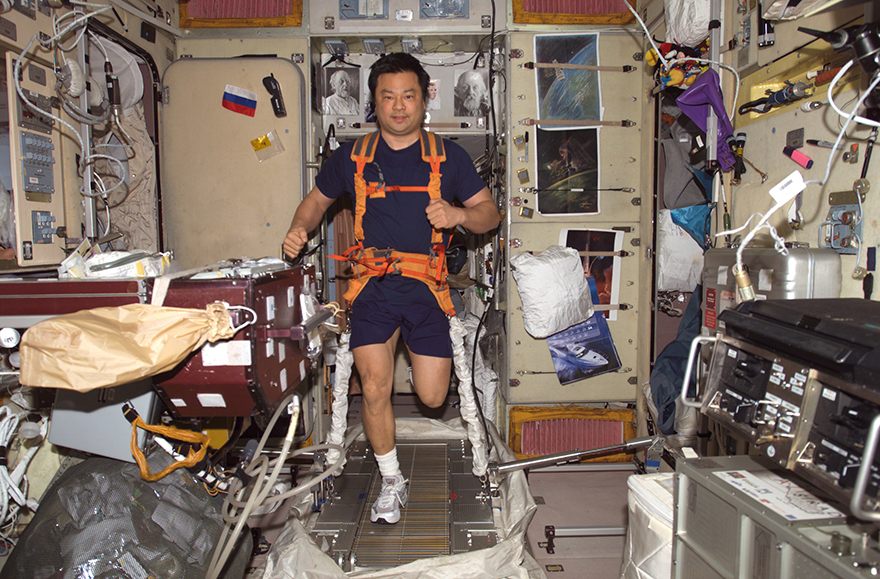What happens to bones in space?

Astronaut Leroy Chiao, Expedition 10 commander and NASA International Space Station (ISS) science officer, equipped with a bungee harness, exercises on the Treadmill Vibration Isolation System (TVIS) in the Zvezda Service Module of the ISS. April 10, 2005. (Credit: NASA)
One of the major obstacles to long-term space missions in the threat of severe bone loss in astronauts. In the microgravity environment of space, astronauts lose on average 1% to 2% of their bone mineral density every month. For a short-duration flight, bone loss is a fairly minor consequence.
On a long-duration space flight, such as those planned for missions to Mars and beyond, bone loss can be a serious impediment. This loss may not hinder astronauts while they are in orbit, but upon return to Earth, their weakened bones will be fragile and at an increased risk of fractures. At this time, it is unknown whether this bone loss will eventually reach a plateau, or whether it will continue indefinitely.
Bones are not unchanging calcium structures; they constantly reshape themselves in relation to the stress that is put on them. Just like muscles, if you don't use your bones, they will weaken. Bone loss occurs in the weightless environment of space because bones no longer have to support the body against gravity. On Earth, gravity applies a constant mechanical load to the skeletal system, that causes healthy bones to maintain a certain density so that they are able to support the body.
The best way to build bone mass is by doing weight-bearing exercises such as walking, jogging, volleyball, and basketball. However, it is very difficult to duplicate weight-bearing exercise in a weightless environment. Astronauts must use restraints to strap themselves to a treadmill in order to create the necessary weight-bearing environment. Although this countermeasure slows the rate of bone loss, it does not eliminate the problem altogether.
Astronauts are not the only ones who must worry about bone loss. One and a half million Canadians suffer from osteoporosis, a disease that causes bones to lose density and strength. One in four women and one in eight men over the age of 50 have osteoporosis. Researchers hope that solving the problem of bone loss in space will also help to prevent and cure the disease on Earth.

The changes that take place in bones from osteoporosis are similar to the changes that take place in astronauts' bones when they live in microgravity for long periods of time.
Related links
- "Space Bones" - Science@NASA Article: Weightlessness sure looks like a lot of fun, but prolonged exposure to zero-G in space can have some negative side effects - like the weakening of human bones.
- Osteoporosis Experiments in Orbit - from the Canadian Space Agency's Space Life Sciences
- Osteoporosis online - from the Osteoporosis Society of Canada
- Exercising in space